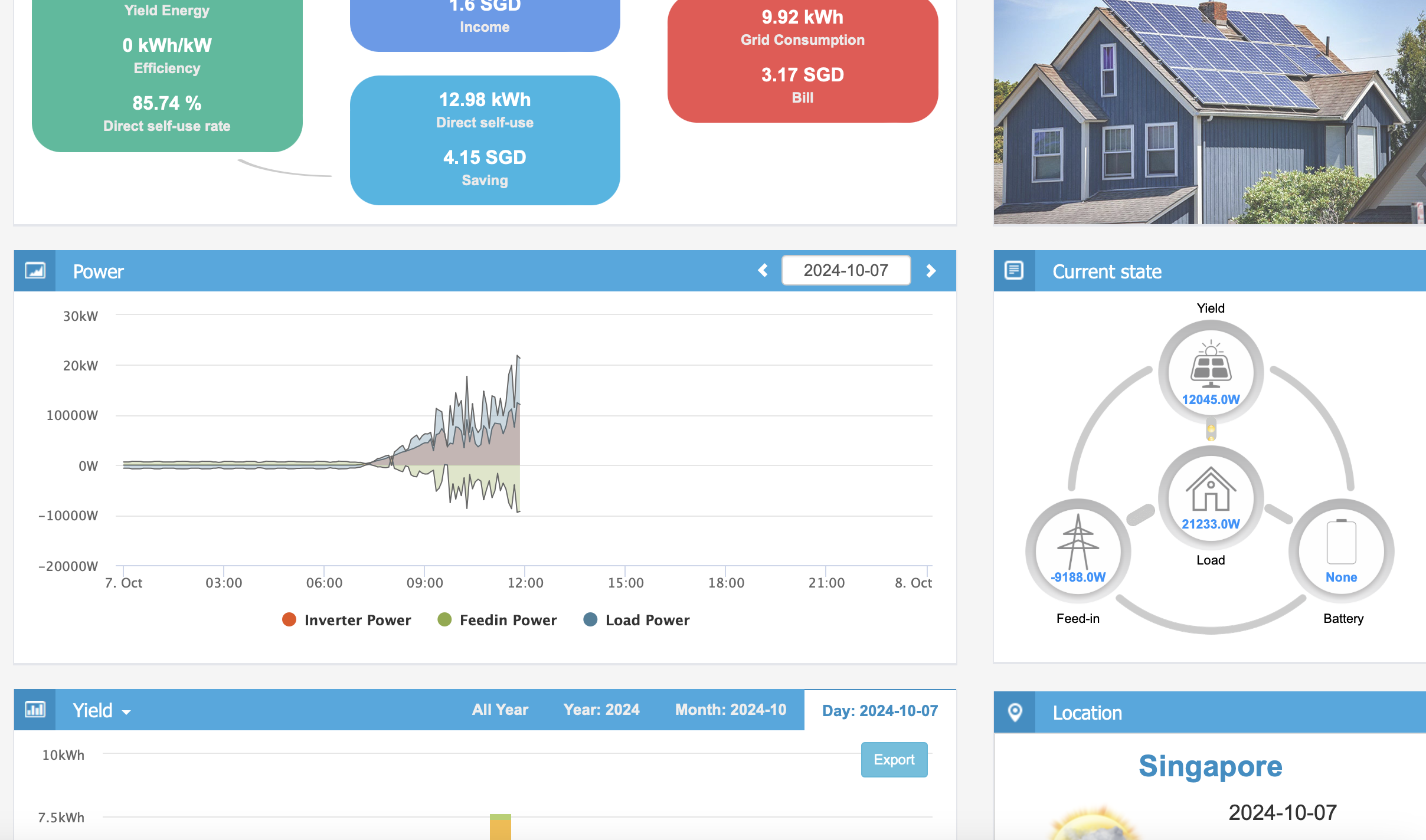3Phase 3080T installation and Energy Usage
Hi,
I have installed 2 of the 3080T meter, 1 at the PV Solar Inverter and 1 at the Grid Load. Thus to measure both the PV generation and Grid Load. Somehow the usage seem to be very high, as you can see from the picture that the house is drawing 9K from Grid while the energy production is 12KW.. it is impossible for the house to consume 21KW on daily usage. The Client bill has also showed it consumed 2 times of their daily after the meter is installed. The question, the meter shouldn't consume energy, or the direction has affected the power consumption?

Hi:
It seems the CT direction of the meter installed on the grid side is not correct.
The feed-in power is the opposite value of the grid power,it would be negative when consumed from the grid and positive when it is exporting energy to the grid.
From your picture ,the feed-in power is positive when there is no solar yield during the night .
Please change the CT direction of the grid meter.
https://www.iammeter.com/docs/wiring-diagram#3-three-phase-solar-pv-system-and-3-phase-grid-system

Then everything would be OK.
the directional may be incorrect, but will that actually affect the grid actual consumption? as the app in the Grid meter show it is actually consuming a lot more power.
The meter does not impact your energy consumption. Its power usage is minimal, around 5W. Any increase in grid consumption is unrelated to the meter's installation.
Please change the CT direction to the correct at first, then you will compare the grid meter result with your customer
So the meter will not affect the energy consumption due to the monitoring right? it is only the reporting that will not reflect correctly..is that correct? I am worry if the incorrect meter direction, will have impact on the consumption due to the flowback..
Absolutely not. The CT (current transformer) only senses current, so no matter how you connect it, it won’t generate any additional power consumption. The total power consumption of the meter is only around 5W.
Ok I will do more testing to disconnect it as well, as the client is not very happy, as the consumption goes up only after the installation.
This can be easily verified. If your customer has other means of monitoring the overall energy consumption, they can observe the power levels and note when the power is high. Then, they can disconnect the power supply to the meter and see if the power remains at the same level.
Hi.
I have swapped the CT direction as instructed.. Somehow I see the value doesnt seem to be very accurate. If you see from the screenshot here. The PV solar generation is 864W and yet my feed in Power is 1.6KW..The load is negative value.. At night, only consuming feed in power of -100+W...
also another interesting observation is..why the consumption increases as the PV power generation increased? if the load consumption remains constant throughout the day time..the increased in PV generation should goes back to the grid (feed in) as Positive value increased. But these doesnt seem to be the case.. it spikes according to the PV generation.
Hi:
It seems the use-type selection is also wrong.
the type of "load" is connected to the "grid"
Please swap the use-type selection with the grid and load.

Change the previous selection "grid" to "load"
Change the previous selection "load" to "grid"
unfortunately I can't seem to find the Load selection in the drop down list. It is not under special load either.
Hi
Yes, I noticed this phenomenon as well, which led me to initially think that you might have set the meter installed on the grid side to 'load' mode. If you had done so, the chart would show the behavior you're observing. However, if you didn't set it to 'load,' the situation would be different.
The load power is not measured directly but is instead calculated based on the grid and inverter power.
https://www.iammeter.com/docs/active-power#34-load-power
Why is the load power varying in response to the inverter's power? The reason is that the feed-in power (the inverse of the grid power) is very small. Normally, the feed-in power would track the inverter's power during the daytime, but in your case, the feed-in power is minimal. Please check whether the meter installed on the grid side is functioning correctly, as the unusually low grid power might be causing this issue.
